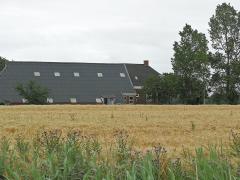Impact of groundwater nitrogen legacy on water quality
The loss of agricultural nitrogen (N) is a leading cause of global eutrophication and freshwater and coastal hypoxia. Despite regulatory efforts such as the European Union’s Nitrogen Directive, high concentrations of N persist in freshwaters. Excessive N leaching and accumulation in groundwater has created a substantial N reservoir as groundwater travel times are orders-of-magnitude slower than those of surface waters.
In this study we reconstructed past and projected future N dynamics in groundwater for four major river basins: the Rhine, the Mississippi, the Yangtze, and the Pearl, all showcasing different N trajectories. The Rhine and Mississippi river basins have accumulated N since the 1950s and although strategies to reduce excess agricultural N have worked well in the Rhine, groundwater legacy N persists in the Mississippi. The Yangtze and Pearl river basins entered the N accumulation phase in the 1970s and the accumulation is expected to continue until 2050. Policies to reduce N pollution from fertilisers have not halted N accumulation, highlighting the importance of accounting for the N legacy in groundwater. Restoring groundwater N storage to 1970 levels by diminishing N leaching will therefore take longer in the Yangtze and Pearl (>35 years) than in the Rhine (9 years) and Mississippi (15 years). Sustainable watershed management requires long-term strategies that address the impacts of legacy N and promote sustainable agricultural practices aligned with the Sustainable Development Goals to balance agricultural productivity with water conservation.
Authors
Specifications
- Publication title
- Impact of groundwater nitrogen legacy on water quality
- Publication date
- 12 June 2024
- Publication type
- Article
- Page count
- 13
- Publication language
- English
- Magazine
- Nature sustainability
- Issue
- 2024
- Product number
- 5563




